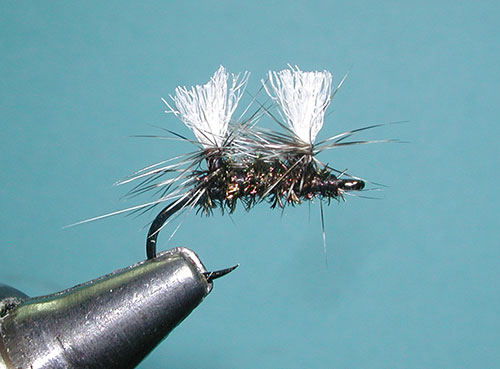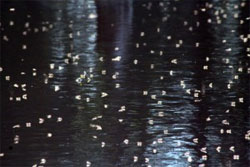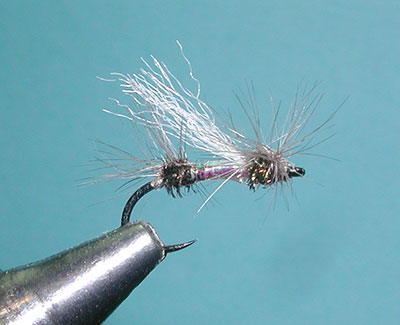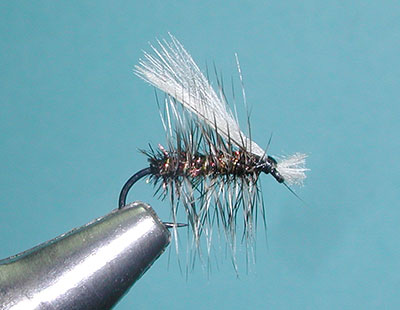

 Tying Instructions |
Materials:
(to Order Material, click the link)
Actual Midge Clusters 
|
|
Notes: Midges can make up almost 50% of the trout's diet. The individual midge can be quite small so rather than tying a size 26, why not create a cluster of these midges on a size 16-18 hook. The Griffiths Gnat pattern fits this need but many fly tiers preferred to embellish the pattern for better floatability and sighting. Rene Harrop on the Henry's Fork added a CDC wing to the Griffiths Gnat and ties it on a size 20 and 22 TMC 900bl. This created some extra bouyancy and was easier to see. Going to a lighter hook and adding floating Poly Yarn with twin parachute wings, the late Shane Stalcup created a wonderful cluster midge pattern that works well in faster water and allows you to quickly spot the fly. Trout will rarely strike at a midge cluster but tend to suck them down. So, when you see this pattern disappear, set the hook. The above pattern is my variation of Stalcup's Cluster Midge. Shane also incorporated two pairs of clear synthetic wings to add some flash and realism to the pattern. I tend to resort to simplicity and limit the number of materials but the more likely reason is, as I get into my later years, adding synthetic wings to a small hook with a lot of stuff going on is just too difficult. Shane was a fly tying genius. The late Bob Quigley was a tier that chose the fore and aft concept for the cluster midge. Bob applied two of his hackle stackers to each of the for and aft sections of the peacock herl. Similar to the Sierra Bright Spot, a center section of flash material separates the two bodys of herl. Any of these cluster midges can also be used during Trico hatches, not just midges. It should be a staple in your flybox.
| ||
Variations: |
|
|
Quigley's Cluster Midge 
|
Materials: (to Order Material, click the link)
|
|
Harrop's Cluster Midge 
|
Materials: (to Order Material, click the link)
|
|